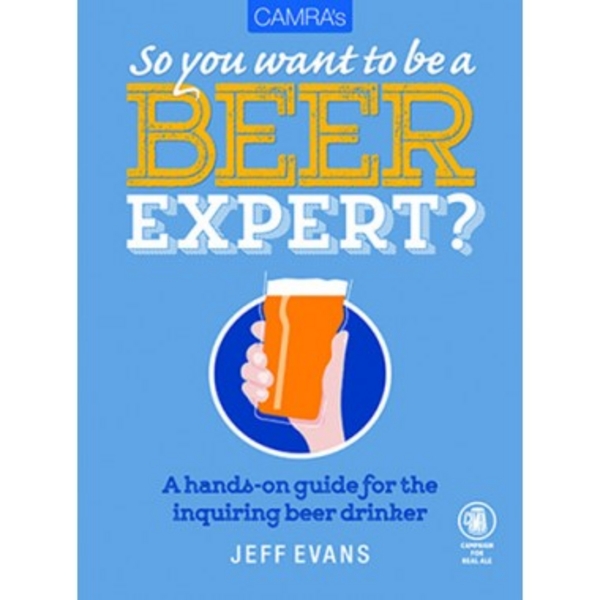How to explore the brilliant world of beer
Added: Monday, October 26th 2015

So You Want To Be a Beer Expert? Jeff Evans (CAMRA Books, £12.99)
This is a timely book. The surge of interest in drinking good beer in recent years has led to a demand for greater knowledge and appreciation of the subject. As Jeff Evans points out, many years ago the wine industry took consumers to its heart, enabling them to develop an understanding of grapes, production methods and vintages. Beer needs similar tender loving care.
But those of us who have been labouring to create a language of beer are in danger of being overtaken by twin events: the sheer flood of new styles and a tendency among the young turks of the craft beer movement to talk in a manner that divorces them from the average punter in the Dog & Duck. “Hop forward”, an expression much in evidence today among craft brewers, is more likely to direct drinkers to the sports pages of their newspapers than to the delights of Cascade, Citra and Willamette.
Sensibly, Jeff restricts the discussion of beer styles to the main ones. As Stephen Beaumont has pointed out in his new book, the Beer & Food Companion, the American Brewers Association has mystified rather than clarified styles by creating a list of 141 divisions and sub-divisions.
In a major section called “A family of beers”, Jeff takes the reader through generic styles that include ales – from milds, through bitters, IPA, porter and stout to old ales and barley wines – lambic, lagers dark and golden, wheat beers and wood-aged varieties. Each style is accompanied by his selection of beers to seek out and taste and the entire book is interspersed with useful tips on where to obtain beers along with breweries that offer tours and key brewing museums in many countries.
Jeff begins at the beginning, tracing the origins of brewing to the Old World in the fertile plains that now form modern Iraq. Brewing played a vital role in turning hunter-gatherers into settled communities where grain was grown to make the staples of life – beer and bread. Brewing spread to the west and Jeff outlines brewing methods and types of beer in the medieval period and the vast changes in technology ushered in by the industrial revolution. He describes how the growth of global brewers in the 20th century restricted consumer choice but how choice has been restored by the modern craft beer revolution.
A major section on brewing strips away the mystique surrounding the subject. In a clear and non-technical way, Jeff details the roles played by grain, hops, yeast and water in the brewing process. There are useful charts that set out the main types of grain used in brewing, with a similar list of the main hop varieties.
With your taste buds tingling from all the information packed in to the book, Jeff lays out the best way to organise beer judging, suggesting the best glassware to use, with tasting forms and a helpful list of beer defects. I was aware of most defects in beer but Jeff has kindly warned me of one that’s new to me: baby vomit.
This is a splendid contribution to the growing library of books about beers. It’s not just for new drinkers. Even the most seasoned beer drinker and writer will gain from Jeff’s book, which serves to stimulate the appreciation of and passion for the world’s favourite beverage.
https://shop.camra.org.uk/books/so-you-want-to-be-a-beer-expert.html








